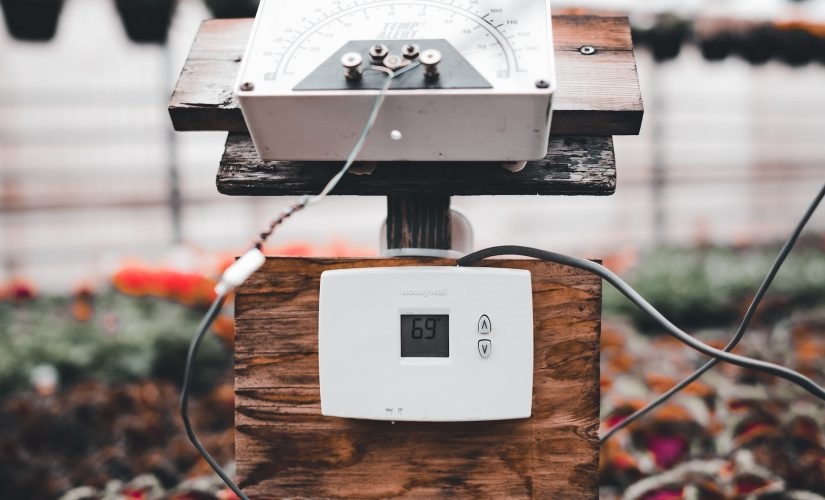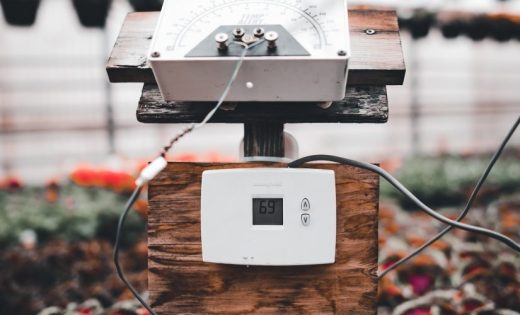The Role of Sensors in IoT Embedded System Design
The Role of Sensors in IoT Embedded System Design

In the tech world that is continually developing, recognizing this function can be a determinant of triumph or defeat.
Many are left scratching their heads when designing efficient, effective embedded IoT systems.
Sensors in IoT embedded system design are a crucial aspect — often overlooked
Finding suitable sensors for your design isn’t easy. But it’s what separates an average system from a top-performing one.
Navigating through smart sensor selection and integration can be challenging indeed.
In this post, you will learn about sensor types, benefits, challenges, and future trends for industrial IoT strategy.
Sensor Types in IoT Embedded System Design
The vast Internet of Things (IoT) network integrates physical devices into the digital realm. This integration is mainly reliant on sensors and embedded systems.
What is an Inbuilt Temperature Sensor?
These light sensors are integral to numerous IoT applications, particularly those related to climate control or industrial processes. They monitor environmental conditions and modify system operations accordingly.
Motion Sensors
Motion sensors are essential for security systems, automation, and user interaction. These identify movement within their scope, instigating specific actions based on relevant data and pre-established rules.
Light and Proximity Sensors
Sensors that detect light help manage energy consumption by adjusting lighting levels according to ambient conditions. Conversely, proximity sensors recognize when objects approach a certain distance from them – this function is vital for safety precautions in industrial environments or interactive experiences with consumer products.
Sensing Technology Plays a Role in Microelectromechanical Systems (MEMS)
Microelectromechanical systems (MEMS), which merge mechanical elements with electronics at a microscopic scale, also extensively use sensing technology. MEMS suppliers, sensor companies, and internet technologies create highly-sensitive devices suitable across various industries, including the automotive sector, through general-purpose computing embedded systems work while transforming contemporary embedded system designs.
This synergy between semiconductor companies‘ embedded software and hardware solutions allows modern embedded systems to support IoT functionality more effectively than conventional ones, thereby increasing sensor adoption rates across multiple markets such as Industrial IoT APAC represents an emerging market where these trends can be observed prominently due to service providers’ interest in integrating advanced tech into existing infrastructure.
All these developments contribute towards creating an enriched IoT context wherein each individual’s experience is personalized thanks to efficient data collection methods enabled via a diverse range of essential sensor types used in different scenarios.
Challenges Faced When Implementing Sensors in IoT Embedded Systems
Incorporating sensors into an IoT-enabled smart embedded system presents its unique challenges. The primary concern for many embedded systems is power consumption.
The reality that these systems often operate on battery power accentuates the need for energy-efficient solutions. Continuous data transmission from sensors can rapidly deplete batteries, leading to frequent replacements or recharging – a task that may be impractical in industrial IoT settings where devices are deployed remotely or at inaccessible locations.
Apart from this, signal interference also poses a significant challenge
In an environment transformed by conventional embedded systems to support IoT functionality, multiple devices might function simultaneously within proximity. This scenario could lead to overlapping signals and potential misinterpretations of data due to cross-talk between various sensor types used by semiconductor companies offering conventional embedded system hardware services. Modern embedded systems design requires careful planning and strategies for effective system integration with service providers who constantly monitor the sensor marketplace trends and advancements.
Sensor Performance under Diverse Environmental Conditions
Another complication when implementing humidity sensors into modern designs is ensuring reliable performance under diverse environmental conditions, such as fluctuating temperatures or varying moisture levels, while maintaining accuracy.
These obstacles underscore why MEMS suppliers, sensor companies, and internet resources must provide robust sensing technology that plays a pivotal role here but must withstand factors like temperature fluctuations or moisture levels while maintaining accuracy.
As we explore future trends in sensor technology for IoT Embedded Systems, such as miniaturization and increased accuracy with AI-driven solutions, these challenges will continue evolving, demanding innovative approaches toward their resolution.
Best Practices for Integrating Sensors into an IoT Embedded System Design
Integrating sensors into your IoT-enabled smart embedded system may seem challenging. However, following a few best practices can easily transform contemporary embedded system systems.
1. Comprehend Your Application Requirements
To begin the process, it’s essential to thoroughly understand your application needs, identifying key IoT functionality and factors like power consumption and cost. This includes considering environmental conditions that might affect sensor adoption in industrial IoT or other contexts.
2. Choose Suitable Sensor Types
Selecting appropriate sensor types is crucial when designing modern embedded systems supporting IoT functionalities across various domains, such as general-purpose computing systems or industrial applications. MEMS suppliers and semiconductor companies offering integrated hardware solutions are valuable resources while exploring this vast sensor marketplace.
3. Maintain Equilibrium Between Power Consumption And Performance
A balance between power usage and performance is pivotal in any successful IoT implementation. APAC represents an ideal model where sensing technology is vital in enabling efficient energy management strategies within these devices without compromising their functional requirements.
- Analyze the necessary operating systems integration needed for the seamless functioning of the device networked within larger ecosystems.
- Inbuilt temperature sensors, amongst others, need careful calibration to ensure optimal performance under varying conditions.
Considerations for Selecting Appropriate Sensors for an IoT Embedded System Design
The design of a robust, efficient, and effective IoT-enabled smart embedded device system hinges on carefully selecting sensors. The choice made can significantly influence not only the performance but also the reliability of your application.
In essence, when selecting suitable sensors, several vital factors need thorough consideration.
Sensor Size and Cost: Balancing Needs with Budget Constraints
An optimal balance between size requirements and cost constraints must be achieved. Compact yet affordable solutions may serve as viable options without compromising functional needs or exceeding budget limits.
Precision versus Power Consumption: A Delicate Trade-off
- A high degree of accuracy in sensing technology plays a pivotal role in ensuring reliable data collection, which drives decision-making processes within modern embedded systems.
- However, precision often leads to increased power consumption, which could pose challenges, particularly if battery-powered devices or industrial IoT applications requiring long-term operation are involved.
Tailoring Sensor Selection According To Environmental Conditions:
Choosing sturdy sensors like inbuilt temperature ones would be beneficial if you’re designing a device for use under harsh environmental conditions such as extreme temperatures or humidity levels.
Future Trends in Sensor Technology for IoT Embedded Systems
Sensor technology is significantly transforming, particularly within IoT-enabled smart embedded systems. The evolution stems from several emerging trends that promise to redefine how these smart sensors operate and interact with their environments.
Sensor Miniaturization
A key trend shaping the future landscape involves miniaturizing sensors. This process entails creating smaller yet equally effective components, an initiative driven by leading semiconductor companies and MEMS suppliers. Such advancements facilitate integration into diverse devices, including those with limited space – a crucial factor as we move towards more compact, efficient designs.
Enhanced Accuracy through AI
Beyond size reduction, there’s also an increased focus on improving accuracy via Artificial Intelligence (AI). In this regard, AI has proven instrumental in enhancing precision levels across various important sensor types, such as temperature or pressure sensors used extensively in modern embedded systems.
Fusion of Sensor Data
In addition to individual improvements per se, another rising trend lies within ‘sensor fusion’. It merges data collected from multiple sources, providing richer information than what could be obtained independently, thereby significantly boosting overall system performance, especially when deployed under industrial IoT contexts.
Rapidly Evolving Role Of Sensors In General Purpose Computing Systems
The role played by sensing technologies continues expanding at breakneck speed, thanks largely to recent developments made possible through the support received worldwide by service providers who accurately read market dynamics, coupled with growing adoption rates witnessed specifically within the APAC region.
FAQs- The Role of Sensors in IoT Embedded System Design
What is the role of sensors in IoT?
Sensors play a pivotal role in IoT by collecting real-time data from the environment, which is then processed and used to make informed decisions or automate processes.
What are the sensors used in embedded systems?
In embedded systems, sensors like temperature, pressure, motion, light, and proximity are the most commonly used for specific tasks.
What are embedded sensors in IoT?
Embedded sensors in IoT refer to tiny devices integrated into an object that collect and share data with other connected devices within an Internet of Things network.
What is the role of sensors and actuators in embedded systems?
Sensors gather information about environmental conditions while actuators execute actions based on this collected data. Together, they enable interaction between an embedded system and its surroundings.
And what’s next? The future holds exciting trends, such as miniaturization and AI-driven solutions that promise even greater precision.
In essence: understanding the role of sensors in IoT-embedded devices and system design is key to unlocking new possibilities in technology development.
Contact TechAhead today for all your IoT app development.
Featured Image Credit: Photo by Erik Mclean; Pexels; Thank you!
The post The Role of Sensors in IoT Embedded System Design appeared first on ReadWrite.
(10)


